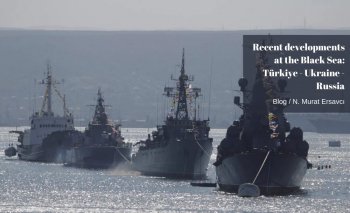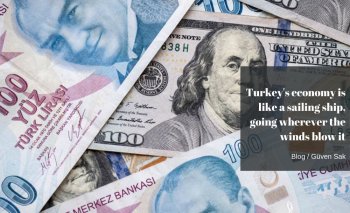Commentaries
Güven Sak, PhD - [Archive]
Turkey cannot prosper by exporting rebar 20/11/2012 - Viewed 2077 times
The shares of high-technology exports in total exports are 20 percent in Korea and 3 percent in Turkey.
Turkey has been a middle-income country ever since I am able to remember. South Korea used to be one, too, but it upgraded to the league of high-income countries by the end of the last century. We have maintained our position in the lower league. Why? If you ask me, the quality of the high-growth star sectors is critical here. The iron-steel sector seems to be the star of Turkey’s economy, with rapidly growing exports and a relative rise in its share in world trade. Yet, I believe that Turkey cannot prosper by selling rebar to the world.
I am not implying that Turkey does not need the iron and steel sector. On the contrary, the US economy is the strongest in the world as it can produce each and every product from the lowest to the highest technology. But if all star sectors of an economy use low-technology, that country cannot (and will not) achieve an advantageous position in the international division of labor. This hinders rapid growth in Turkey and confines us to the middle-income trap. It lowers our chances for making it to the league of high-income countries. It will be impossible without sophisticated production, unless Turkey discovers oil reserves in its territory.
Turkey’s GDP per capita was 20 percent of that of the US in 1970. It is 25 percent of that of the US today. This means, with all the fuss, the stories of the bright future and all coup d’états over the last four decades, Turkey has improved its relative GDP per capita against the US by only 5 percentage points. Indeed, the 5-point improvement was achieved in the last decade thanks to the customs union and political and economic stability. Just like in the fairy tales, we walked day and night, but made almost no headway!
So, is the future outlook for Turkey so bad? No, but it depends on what steps will be taken. Let me tell you how: Japan and South Korea were where Turkey is today – each had 25 percent of the GDP per capita of the US – in 1954 and 1982, respectively. Japan reached 50 percent of that of the US in 13 years, by 1967, and South Korea in 14 years, by 1996. Then, Turkey’s goals for the 2023 are not unrealistic but doable, with steps in the right direction and conscious economic policies, of course. Otherwise, the iron-steel sector will remain the star of Turkey’s economy.
The infrastructure of production
How did Japan and South Korea achieve half of the GDP per capita in the US and make it to the high-income league? By implementing active industrial policies which in turn raised the share of high-technology in total exports. This is the very reason why I argue that Turkey cannot become a high-income country by exporting rebar. The shares of high-technology exports in total exports are 20 percent in Korea and 3 percent in Turkey. I think the policy target is clear for Turkey. The key sectors appear to be chemicals, pharmaceuticals, biotechnology, machinery and electronics.
Turkey has to review its production infrastructure to leap from the middle- to high-income. It has to build in Turkey the production infrastructure and economic capability set enjoyed by high-income countries. We have to keep in mind that high-income requires a high-quality production infrastructure.
High-income countries engage in high-technology production. Just check the lists. They produce machinery and electronics as well as rebar.
This commentary was published in Radikal daily on 20.11.2012














